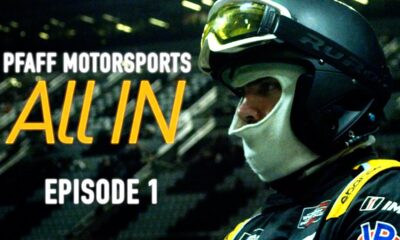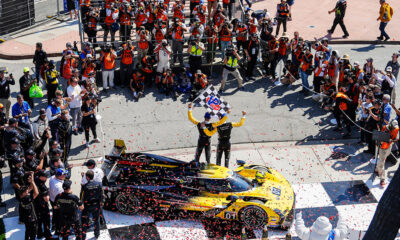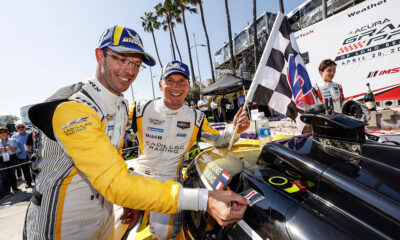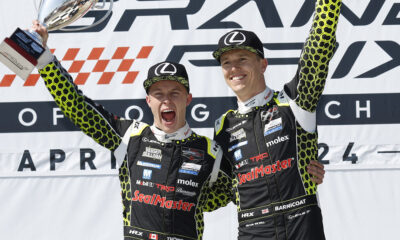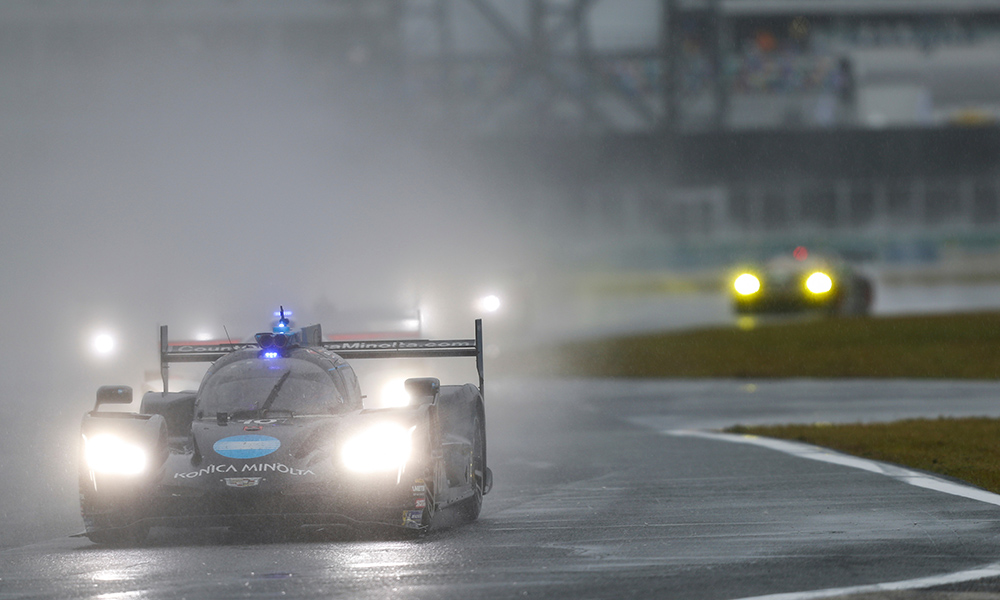
Photo: Jake Galstad/IMSA
Fernando Alonso believes that the final laps prior to the race-ending red flag in Sunday’s Rolex 24 at Daytona were “not right” admitting he was calling for the race to be stopped even while running in second.
The two-time Formula 1 world champion, who claimed victory in the Wayne Taylor Racing Cadillac DPi-V.R alongside Kamui Kobayashi, Jordan Taylor and Renger van der Zande, grabbed the lead from the No. 31 Whelen Engineering Racing Cadillac DPi of Felipe Nasr after the Brazilian aquaplaned into Turn 1.
It came moments before the 17th and final full course caution came out that led to the eventual red flag with 1 hour and 57 minutes to go.
“I called a lot of times when I was second, over the radio, that the safety car was necessary,” Alonso said.
“I think the last five or seven laps were not right for anyone on track. The visibility was nearly zero.
“We could not be flat out on the straights. The cars… were coming in sixth gear at 200 mph. There were parts of different cars at different points of the track because people were losing the bodywork here and there.
“I was calling the team for a safety car immediately because I could not see anything.
“Then Felipe went a little bit long into Turn 1. We took the lead and were just lucky at that moment.”
While other drivers, including Laurens Vanthoor and Richard Westbrook, also spoke out on the conditions, Nasr said he wanted to go back racing after losing the lead and eventual win by a mere seconds.
IMSA ultimately called the race with 11 minutes remaining during the lengthy second red flag period.
“It was looking good until the rain really poured down,” Nasr said. “There was nothing I could do: I was the first car coming through and I just aquaplaned all the way and lost the lead.
“But I wanted to go back racing. We had a good car, we did a good job all race, and everything we did went to plan.
“I think we had a winning car in our hands and I wanted to get the job done if I could.”
Alonso, who enjoyed an enthralling battle with Nasr in the closing hours, said WTR deserved the win after its dominant performance.
The No. 10 Konica Minolta-sponsored Cadillac DPi led a race-high 259 laps, with Alonso taking the car to the front in the dry night-time hours and particularly dominating in the wet.
“I’m very, very proud of the job we achieved today,” Alonso said. “We had a plan of how the race should be executed and we followed [it] step by step.
“The conditions were changing and we had to adapt. It wasn’t down to luck or keep changing things in the last moment.
“Whatever conditions we found or whatever positions we were in, it was a plan to executive. We just followed [it].”
Raffauf: IMSA Made Decisions Based on “Best Information”
According to Mark Raffauf, IMSA’s senior director of race operations, the decisions in race control were based on the available condition of the track, with safety being their number one priority.
The longtime IMSA official compared the event to the rain-soaked events in 1981 and 2004, which also saw lengthy red flag periods.
“Visibility, [there’s] a lot of variables that have to be taken into account by a lot of different inputs,” Raffauf said. “We chose to do what we did based on the best information we had.
“I feel very confident we treated it well.
“The biggest problem at the Speedway here is that once the ground is saturated, it’s very difficult to remove it from the asphalt.
“Once the cars can no longer technically complete, we feel that it’s fairly senseless to carry on.”
Raffauf said they used all available resources to “get the track back” to operational conditions during the two red flag periods, with the obligation of attempting to complete the race.
It included utilizing all jet dryers on hand at the facility, which were on track until the race was officially called.
“We tried every angle and every possibility we had using all the hardware, people and staff that we have to do that,” he said. “Unfortunately we came up a little short.”




















